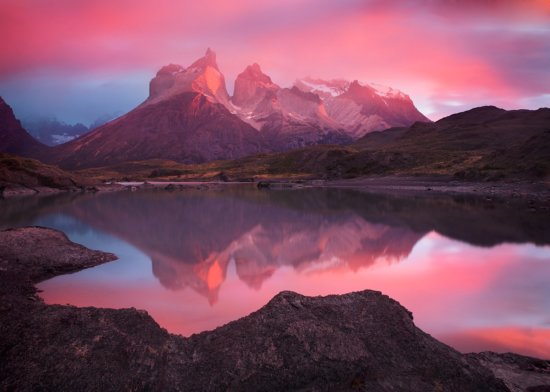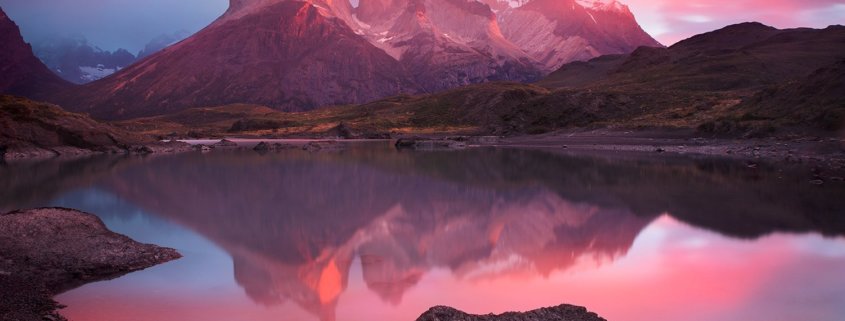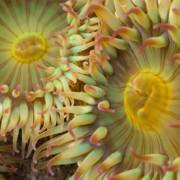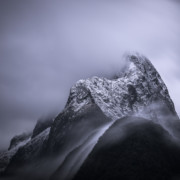3 High Impact Creative Variables for Landscape Photography
Landscape photography is more than just capturing what you see with your eyes. Instead, it is a way of showing others your artistic vision. Don’t think of your technical choices as either “right” or “wrong;” instead, remember they are merely parts of the overall creative process, subject to interpretation and manipulation. Three technical choices in particular —
- Camera Exposure
- White Balance
- Shutter Speed
should be viewed as powerful creative variables at your disposal. Here is how I use these creative variables to create awe-inspiring landscape photos.
#1: Camera Exposure
There is no such thing as a “correct” or “proper” exposure in landscape photography. I often deliberately under- or over-expose my landscape photos to make moody and expressive images, deviating from what might be viewed as an optimal exposure. For example, with the photo below of lava flowing off a cliff into the ocean, I chose I dark exposure for a more mysterious presentation of my subject. The bright lava and the illuminated steam around it just barely emerge from the surrounding inky blackness, focusing attention on what is important in the photography composition.

Landscape Photography by Ian Plant – Canon 1DXII, Canon 24-70mm f/2.8 lens, ISO 400, f/2.8, 1/60 second.
#2: White Balance in Landscape Photography
Without getting too technical, white balance basically determines how color is interpreted in a digital photograph. The process is generally used to remove color casts created when shooting in light that is relatively warm or cool, as compared to the “neutral” light of full daylight during the middle of the day. But white balance is not an inflexible objective parameter; rather, it is a subjective artistic tool which, when used creatively for landscape photography, can greatly enhance the mood and appeal of your photo.
I’ll often deviate from the “correct” white balance to more closely match the colors of the scene as perceived by my eye—or for purely creative reasons. You should freely experiment with white balance, assessing multiple options until you find the color balance that appeals to you the most. In the end, the correct white balance is any white balance which you think makes the image look best.

Creative use of white balance for landscape photography by Ian Plant -Canon 5DIII, Tamron 24-70mm f/2.8 lens, polarizer filter, 3-stop neutral density filter, ISO 100, f/11, 30 seconds.
With the photo above, the entire cloudy sky lit up with sunrise light, bathing the scene in brilliant red. Rather than correcting for the red light, I choose a white balance setting that preserved the color. A more striking image—true to the original scene as perceived by my eyes—is the result.
#3: Shutter Speed
Although we perceive the passage of time as a fluid transition from one moment to the next, photographs record time in a different way, either freezing motion during short exposures, or recording cumulative moments during long exposures. Either way, your choice of shutter speed can have a profound impact on the final look of your image. I often use long shutter speeds to blur motion, and to add an artistic quality to my photos.

Slow Shutter Speed for High Impact Landscape Photography by Ian Plant – Great Smoky Mountains National Park, USA. Canon 5DII, Nikon 14-24mm f/2.8 lens with Canon adapter, polarizer filter, ISO 100, f/11, 3.2 seconds.
Getting a long exposure means shooting in low light, using smaller apertures, dropping your ISO, and/or cutting down on the light by using a neutral density filters (ND Filters). The optimum shutter speed will depend on several variables, including direction and speed of motion, as well as your own subjective artistic tastes; I generally prefer a shutter speed that creates some blur while still retaining a bit of texture. The best way to find the “right” shutter speed is to experiment and review the resulting images on your LCD screen. With the photo below, I tried several different shutter speeds until I found one that completely blurred the frothing water around the boulder, resulting in a dreamy look.
Just remember, there are no rules when it comes to making landscape photos—only tools that are subject to your creative whim. Technical competence is important, but it should never solely control your landscape photography. Rather, your artistic vision should always be in the driver’s seat!










A brilliant article on the two subjects I love the most, Landscapes and rocky rivers or waterfalls. From now on when I feel I’m stagnating I’ll remember your article that has vision and “gut feeling”, something I prefer than trying to remember all the rules.
Great tips.